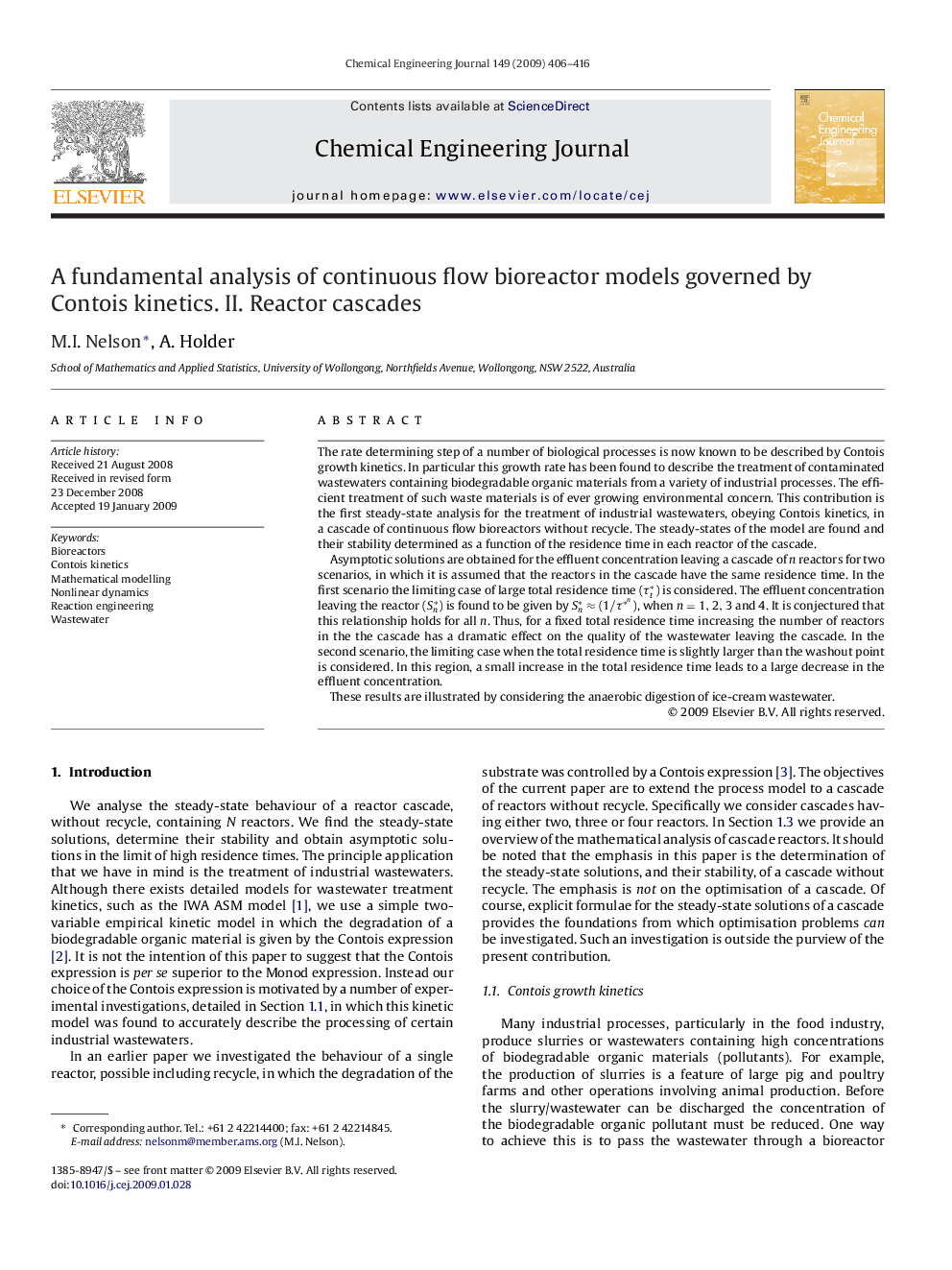| Article ID | Journal | Published Year | Pages | File Type |
|---|---|---|---|---|
| 152338 | Chemical Engineering Journal | 2009 | 11 Pages |
The rate determining step of a number of biological processes is now known to be described by Contois growth kinetics. In particular this growth rate has been found to describe the treatment of contaminated wastewaters containing biodegradable organic materials from a variety of industrial processes. The efficient treatment of such waste materials is of ever growing environmental concern. This contribution is the first steady-state analysis for the treatment of industrial wastewaters, obeying Contois kinetics, in a cascade of continuous flow bioreactors without recycle. The steady-states of the model are found and their stability determined as a function of the residence time in each reactor of the cascade.Asymptotic solutions are obtained for the effluent concentration leaving a cascade of n reactors for two scenarios, in which it is assumed that the reactors in the cascade have the same residence time. In the first scenario the limiting case of large total residence time (τt∗) is considered. The effluent concentration leaving the reactor (Sn∗) is found to be given by Sn∗≈(1/τ∗n), when n=1,2,3n=1,2,3 and 4. It is conjectured that this relationship holds for all n. Thus, for a fixed total residence time increasing the number of reactors in the the cascade has a dramatic effect on the quality of the wastewater leaving the cascade. In the second scenario, the limiting case when the total residence time is slightly larger than the washout point is considered. In this region, a small increase in the total residence time leads to a large decrease in the effluent concentration.These results are illustrated by considering the anaerobic digestion of ice-cream wastewater.
